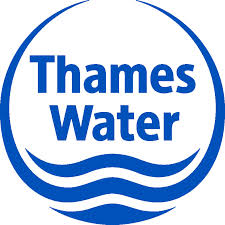-
- Buy a UK rod licence: EA Link
- 0800 807060 EA Hotline, Pollution, Poaching
- Thames Region River Levels
- Thames River Conditions
- Thames Temps and Clarity
- Thames Fishing Byelaws
- Thames Annual Tidefest
- Thames Record List
- Thames Eel Monitoring
- EA Annual Fisheries Report
- EA Flood Warnings
- Thames Sewage Discharge Notifications
- Thames Sewage Events
- Thames Tideway Tunnel
- River Thames Scheme: Reducing flood risk from Datchet to Teddington
- Martin Salter: Fighting for Fishing Blog
- Duncan Charmans World of Angling Blog
- Angling Trust
- Water and sewerage companies in England: environmental performance report 2013 – 2016
- EA Pollution incidents: 2014 evidence summary
- EA Pollution incidents: 2015 evidence summary
- River Crane and DNR Fisheries Impact assessment
- Links
Recent Tweets
Error retrieving tweetsNews Archive
Thames Water to pay £41,000 for Pollution and Fish Kill on the River Ash
In May the company pleaded guilty to two charges in relation to the pollution of the river between August 8 and 14, 2010. It was fined £17,500 at Staines Magistrates’ Court on Friday (June 14) and was also ordered to pay costs of £23,500 and a victim surcharge of £15. Thames Water was convicted after discharging polluting matter from its Ashford Common Water Treatment Works (ACWTW), which was not in accordance with its permit issued by the Environment Agency.
The company was also convicted on one other charge of breaching a permit condition as dissolved oxygen levels were less than the required 50% during the same period in August 2010. Magistrates said the incident was ‘foreseeable’ and that Thames Water’s contingency plan was ‘inadequate’ for its planned engineering works when the pollution occurred. However the company did confirm they had spent £190,000 on improving its treatment works and a further £90,000 on a study regarding the long term suitability of the plant.
Environment Officer Luke Tobitt said: “As the regulatory authority for Inland Freshwaters, the Environment Agency has a wide range of responsibilities under legislation to protect and improve the water environment. Clean water is an essential resource for commercial activities, recreation, fisheries and local wildlife. “Although Thames Water has had previous convictions, this is the first time it has been successfully prosecuted in relation to a water treatment works and blue green algae. It was a complex and resource-intensive case and we are satisfied to have recovered a significant proportion of the costs incurred whilst conducting the investigation. “The prosecution and fining of Thames Water sends a clear message to companies that if they fail in their environmental responsibilities they may be prosecuted.”
The River Ash flows from Staines through Ashford and joins the River Thames at Sunbury. The river is a fish spawning ground for the River Thames and provides an excellent habitat to support fish populations. Treated water from the ACWTW goes firstly into a lagoon on site and then discharges via a discharge pipe at Nutty Lane. On August 8, 2010, members of the public reported dead and dying fish on the River Ash to the Environment Agency. An Environment Officer witnessed the discharge in the form of a blue/grey effluent in to the River Ash.
The total length of the river affected by this pollution was 2.7km. Dead fish were observed on the river by one Environment Officer. A total of 207 fish were recovered from a 120 metre stretch. A minimum estimate by the Agency of total fish mortalities across the affected areas of the river was 4,300 of varying species. The discoloured water was witnessed by local residents and some undertook a fish rescue. One environment officer conducted a dye trace that demonstrated the link between the lagoon in ACWTW and the outfall at Nutty Lane.
When Thames Water was interviewed it stated it had no choice but to discharge from the lagoon on site through the discharge outfall to the river otherwise properties surrounding the lagoon would have been flooded. Thames Water later discharged effluent straight from the works, by-passing the lagoon.
This entry was posted in News and tagged Environment Agency, Fish, Fish KIll, Pollution, Sewage, Thames Water. Bookmark the permalink.


